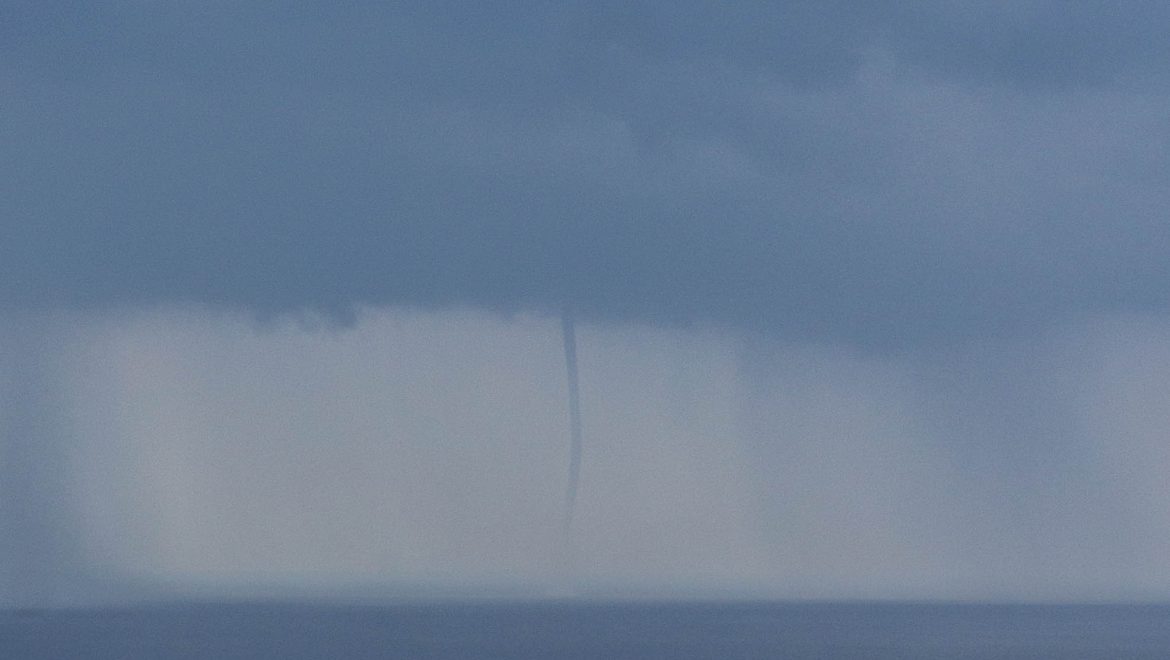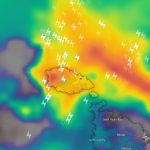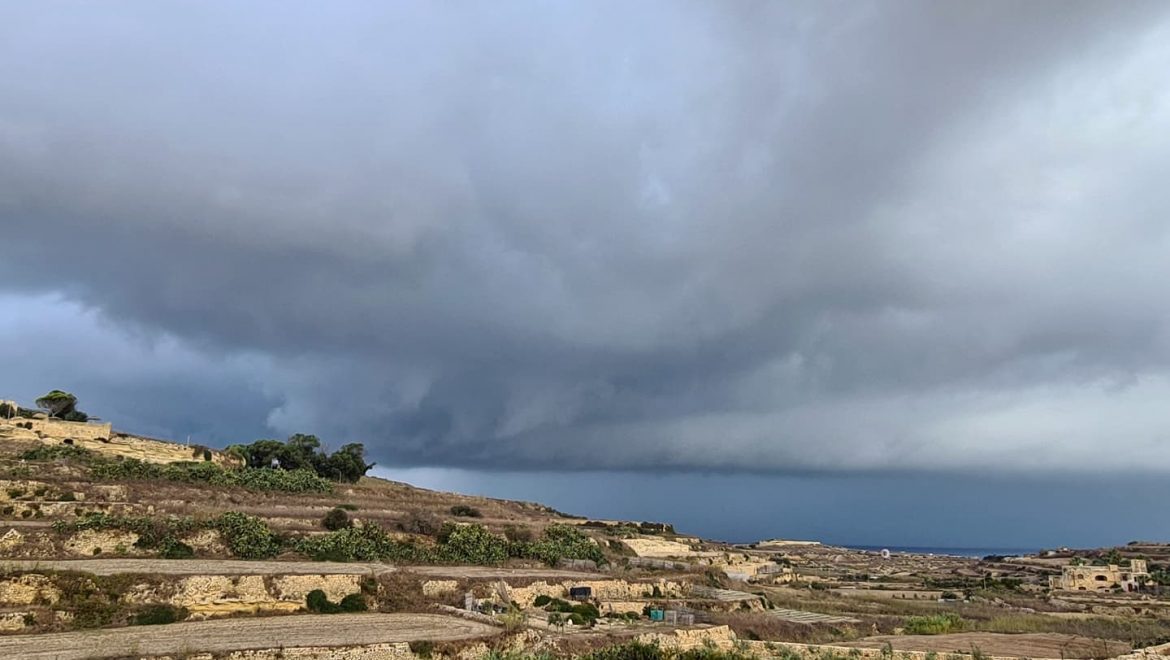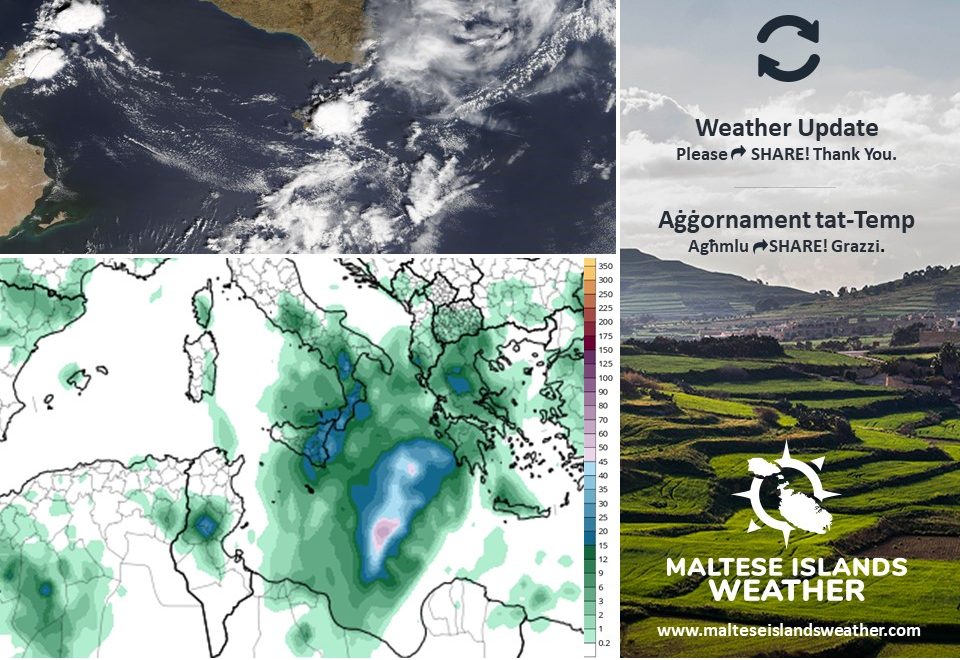Air Temperature
| Highest Maximum |
27.6°C |
4th and 5th |
| Lowest Maximum |
18.4°C |
29th |
| Highest Minimum |
21.4°C |
1st |
| Lowest Minimum |
13.9°C |
21st |
| Mean Maximum |
23.5°C |
| Mean Minimum |
17.7°C |
| Mean |
20.6°C |
Relative Humidity
| Lowest Relative Humidity |
48% |
15th |
| Mean Relative Humidity |
78.0% |
Atmospheric Pressure
| Highest Atmospheric Pressure |
1029.6hPa |
20th |
| Lowest Atmospheric Pressure |
1008.0hPa |
14th |
| Mean Atmospheric Pressure |
1017.3hPa |
Wind
| Highest Gust |
49.9km/h |
16th |
| Mean Wind Speed |
7.2km/h |
| Mean Gust Speed |
16.8km/h |
| Mean Wind + Gust Speed |
11.6km/h |
| Most Frequent Wind Direction |
South Southeast |
Precipitation
| Total Rainfall During October 2021 |
241.0 mm |
| Total Rainfall Since Last 01/09 |
250.6 mm |
| Highest 24 Hour Total |
69.5 mm |
3rd |
| Rain Days |
20 days |
| Thunderstorm Days |
10 days |
| Hail Days |
2 days |
Rainfall Events
| 02/10/2021 |
32.1 mm |
Thunderstorm; Hail |
| 03/10/2021 |
69.5 mm |
Thunderstorm; Hail |
| 05/10/2021 |
2.4 mm |
P.M. Isolated Thunderstorm |
| 06/10/2021 |
3.0 mm |
A.M. Isolated Thunderstorm |
| 07/10/2021 |
1.2 mm |
Isolated Showers |
| 08/10/2021 |
2.1 mm |
Isolated Showers |
| 09/10/2021 |
0.3 mm |
Isolated Showers |
| 10/10/2021 |
3.7 mm |
Isolated Showers; Distant Thunder |
| 12/10/2021 |
0.4 mm |
Isolated Showers |
| 14/10/2021 |
34.5 mm |
Steady Rain; Thunder |
| 15/10/2021 |
0.5 mm |
Isolated Showers |
| 16/10/2021 |
0.2 mm |
Light Rain |
| 18/10/2021 |
1.0 mm |
Isolated Showers; Distant Thunder |
| 25/10/2021 |
24.1 mm |
P.M. Steady Rain; Thunder |
| 26/10/2021 |
39.7 mm |
A.M. Steady Rain; Thunder; P.M. Showers |
| 27/10/2021 |
11.9 mm |
Showers |
| 28/10/2021 |
2.8 mm |
Showers |
| 29/10/2021 |
4.6 mm |
Light Rain |
| 30/10/2021 |
0.3 mm |
Light Rain |
| 31/10/2021 |
6.7 mm |
Light Rain; P.M. Steady Rain |
October 2021 Compared to the Climate Means
| |
Climate Mean |
October 2021 |
Anomaly |
| Mean Maximum Temperature |
24.8°C |
23.5°C |
-1.3°C |
| Mean Minimum Temperature |
17.9°C |
17.7°C |
-0.2°C |
| Mean Temperature |
21.4°C |
20.6°C |
-0.8°C |
| Mean Relative Humidity |
78% |
78.0% |
/ |
| Mean Atmospheric Pressure |
1017.6hPa |
1017.3hPa |
-0.3hPa |
| Mean Wind Speed |
14.1 km/h |
11.6 km/h |
-2.5km/h |
| Total Rainfall |
83.3 mm |
241.0 mm |
+157.7 mm |
| Total Rainfall Since Last 01/09 |
138.8 mm |
250.6 mm |
+111.8 mm |
| Total Rain Days |
10 days |
20 days |
+10 days |
| Total Thunderstorm Days |
5 days |
10 days |
+5 days |
| Total Hail Days |
1 day |
2 days |
+ 1 day |
October 2021 One of the Wettest Ever
October 2021 turned out to be noticeably cooler than average. With a mean temperature of 20.6°C, last month was a solid 0.8°C cooler than the climate norm. Last month started off on a relatively warm note. This was short-lived, however. Successive pockets of cooler air from over Europe, coupled with the cooling effect of rain on a staggering 20 days, ensured a pattern of consistently cooler than average temperatures. A 13.9°C low, the coldest for October 2021, was registered on the 21st. This was measured at around dawn, after a night of cooling under anticyclonic conditions. The very warm days at the start of the month were brought about by southerly winds which fanned hot air from north Africa towards the central Mediterranean. Last months warmest temperature of 27.6°C was measured on two days, the 4th and 5th.
The 241.0 mm of rain measured last month was almost three times more than the 83.3 mm expected in a typical October. This made October 2021 the third wettest October since record keeping began a century ago. Rain fell on 20 days last month, with rainfall events having been evenly distributed, bar for a brief dry spell in the third week of the month. Thunder was heard on 10 days. Hail was observed on 2 days. Total 24-hour rainfall exceeded 25 mm on 4 days. The wettest day was the 3rd, when 69.5 mm of rain were recorded. Much of this rain fell in a few minutes in the very early hours, during an intense thunderstorm that packed rainfall rates of over 300 mm/hr, winds of up to Force 7 and dangerous cloud-to-ground lightning. Xlendi, notable for frequent in storms, bore the brunt of it all. The valley system that empties in Xlendi collects run-off from the localities which received the most rainfall from these thunderstorms. Cars were carried to the sea and debris littered the streets. Rainfall during the thunderstorm was most intense between 3:28 a.m. and 3:39 a.m. when a staggering 37.8 mm of rain were dumped in just 11 minutes.
October 2021 turned out to be noticeably cooler than average. With a mean temperature of 20.6°C, last month was a solid 0.8°C cooler than the climate norm. Last month started off on a relatively warm note. This was short-lived, however. Successive pockets of cooler air from over Europe, coupled with the cooling effect of rain on a staggering 20 days, ensured a pattern of consistently cooler than average temperatures. A 13.9°C low, the coldest for October 2021, was registered on the 21st. This was measured at around dawn, after a night of cooling under anticyclonic conditions. The very warm days at the start of the month were brought about by southerly winds which fanned hot air from north Africa towards the central Mediterranean. Last months warmest temperature of 27.6°C was measured on two days, the 4th and 5th.
The 241.0 mm of rain measured last month was almost three times more than the 83.3 mm expected in a typical October. This made October 2021 the third wettest October since record keeping began a century ago. Rain fell on 20 days last month, with rainfall events having been evenly distributed, bar for a brief dry spell in the third week of the month. Thunder was heard on 10 days. Hail was observed on 2 days. Total 24-hour rainfall exceeded 25 mm on 4 days. The wettest day was the 3rd, when 69.5 mm of rain were recorded. Much of this rain fell in a few minutes in the very early hours, during an intense thunderstorm that packed rainfall rates of over 300 mm/hr, winds of up to Force 7 and dangerous cloud-to-ground lightning. Xlendi, notable for frequent in storms, bore the brunt of it all. The valley system that empties in Xlendi collects run-off from the localities which received the most rainfall from these thunderstorms. Cars were carried to the sea and debris littered the streets. Rainfall during the thunderstorm was most intense between 3:28 a.m. and 3:39 a.m. when a staggering 37.8 mm of rain were dumped in just 11 minutes.

Rainfall Totals around the Maltese Islands in October 2021 (and since last September 1st):
Għarb – 241.0 mm (250.6 mm)
Marsalforn – 259.3 mm (274.5 mm)
Victoria – 253.5 mm (271.9 mm)
Xewkija – 205.6 mm (220.4 mm)
Nadur – 236.1 mm (249.0 mm)
Mellieħa – 177.4 mm (194.2 mm)
Buġibba – 207.2 mm (241.5 mm)
Naxxar – 197.0 mm (231.3 mm)
Dingli – 185.5 mm (231.7 mm)
Mġarr – 226.3 mm (252.2 mm)
Mosta – 165.5 mm (190.5 mm)
Msida – 227.4 mm (250.2 mm)
Sliema – 213.5 mm (238.9 mm)
Valletta – 140.5 mm (161.6 mm)
Imqabba – 262.8 mm (276.1 mm)
Żabbar – 292.5 mm (305.1 mm)
Birżebbuġa – 212.2 mm (224.3 mm)
NATIONAL MEAN – 218.0 mm (239.2 mm)










































 r was noted.
r was noted.